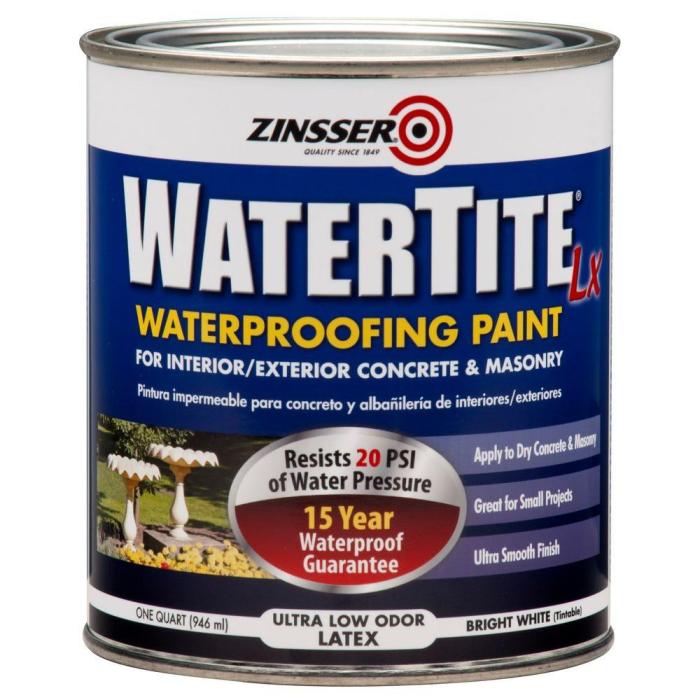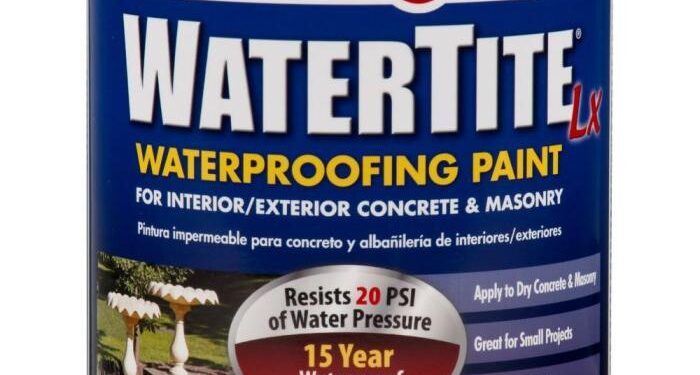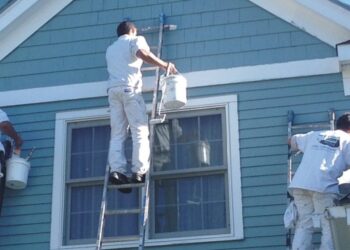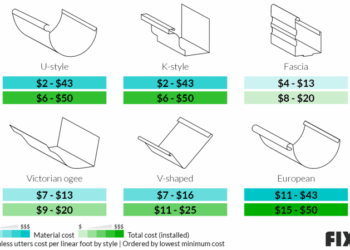Exploring the world of water proof exterior paint solutions unveils a realm of possibilities for protecting and enhancing your home's exterior. From different types to application techniques, this guide delves into everything you need to know to make an informed decision.
Types of Water-Proof Exterior Paint Solutions
When it comes to protecting your exterior walls from water damage, there are several types of water-proof exterior paint solutions available in the market. Each type offers unique features and benefits that cater to different needs and preferences.
Acrylic-Based Water-Proof Paint
Acrylic-based water-proof paint is known for its durability and flexibility. It forms a strong protective barrier against water, preventing moisture from seeping into the walls. This type of paint is also resistant to UV rays, making it ideal for exterior applications.
The quick drying time of acrylic-based paint allows for faster recoating and ensures a smooth finish.
Latex-Based Water-Proof Paint
Latex-based water-proof paint is another popular choice for exterior surfaces. It offers excellent adhesion to various materials and provides a breathable barrier that allows moisture to escape while preventing water penetration. Latex-based paint is easy to clean and maintain, making it a convenient option for homeowners.
However, it may not be as durable as acrylic-based paint in harsh weather conditions.In conclusion, both acrylic-based and latex-based water-proof exterior paints have their own set of advantages and drawbacks. While acrylic-based paint is known for its durability and flexibility, latex-based paint offers easy maintenance and breathability.
The choice between the two ultimately depends on factors such as climate, budget, and personal preference.
Factors to Consider When Choosing Water-Proof Exterior Paint
Before diving into selecting water-proof exterior paint, it is crucial to prepare the surface properly. Surface preparation ensures better adhesion and longevity of the paint, ultimately leading to a more effective waterproofing solution.
Importance of Surface Preparation
Proper surface preparation involves cleaning, repairing cracks or damages, and priming the surface before applying the water-proof exterior paint. This step is essential to remove any existing dirt, grease, or old paint that may hinder the paint's ability to adhere to the surface.
By ensuring a clean and smooth surface, you can maximize the effectiveness of the waterproofing paint.
Key Factors to Consider
- Weather Resistance: Choose a water-proof exterior paint that can withstand the local climate conditions, whether it's extreme heat, heavy rain, or snow.
- UV Protection: Look for paints with UV protection to prevent fading or discoloration caused by prolonged exposure to sunlight.
- Mold/Mildew Resistance: Opt for paint that has anti-mold and mildew properties to protect the exterior walls from fungal growth.
Choosing the Right Paint Color
When selecting a paint color for the exterior, consider the architectural style and color scheme of the building. Choose a color that complements the existing elements like the roof, windows, and landscaping. Additionally, darker colors tend to absorb more heat, while lighter shades can reflect sunlight, helping to maintain a comfortable temperature inside the building.
Application Techniques for Water-Proof Exterior Paint

Proper application techniques are crucial when it comes to applying water-proof exterior paint to ensure a long-lasting and effective finish.
Surface Preparation
Before applying water-proof exterior paint, it is important to properly prepare the surface. This includes cleaning the surface to remove any dirt, debris, or loose paint. Any cracks or holes should be filled, and the surface should be smooth and dry before painting.
Application Methods
There are several methods for applying water-proof exterior paint, including brushing, rolling, and spraying
Brushing
Using a high-quality brush, apply the paint in even strokes following the grain of the surface.
Rolling
A paint roller can be used for larger surfaces, ensuring even coverage by rolling in one direction.
Spraying
Spraying the paint can provide a quick and efficient way to cover large areas, but attention to overspray is essential.
Tips for a Smooth Finish
To achieve a smooth and even finish when applying water-proof exterior paint, consider the following tips:
- Use high-quality paint and tools to ensure a professional result.
- Work in small sections to maintain control over the application.
- Apply multiple thin coats rather than one thick coat to prevent drips and uneven coverage.
- Follow the manufacturer's instructions for drying times and re-coating to avoid any issues with the finish.
Maintenance and Longevity of Water-Proof Exterior Paint
Regular maintenance is key to prolonging the life of water-proof exterior paint. By following proper care practices, you can ensure that your painted surfaces remain protected against moisture and other external elements.
Cleaning and Care for Water-Proof Painted Surfaces
- Regularly clean painted surfaces with a mild detergent and water to remove dirt, dust, and grime that can deteriorate the paint over time.
- Avoid using harsh chemicals or abrasive cleaners, as they can damage the paint and compromise its water-proofing properties.
- Inspect the painted surfaces periodically for any signs of wear, such as peeling or cracking, and address them promptly to prevent further damage.
- Consider applying a fresh coat of water-proof exterior paint every few years to maintain its protective qualities and keep your surfaces looking fresh and vibrant.
Repainting for Maintaining Water-Proofing Properties
- When you start noticing signs of wear and tear on your water-proof painted surfaces, such as water stains or mold growth, it may be time to consider repainting.
- Repainting is essential to restore the water-proofing properties of the paint and ensure that your exterior surfaces are adequately protected against moisture and weathering.
- Consult with a professional painter to determine the best course of action for repainting, including selecting the right type of water-proof exterior paint for your specific needs.
Concluding Remarks
In conclusion, water proof exterior paint solutions offer not just protection but also aesthetic appeal. By understanding the various factors and maintenance tips discussed, you can ensure your exterior paint stands the test of time.
Commonly Asked Questions
What are the key differences between acrylic-based and latex-based water-proof paints?
Acrylic-based paints offer better durability and adhesion, while latex-based paints are more flexible and breathable.
How important is surface preparation before applying water-proof exterior paint?
Surface preparation is crucial as it ensures proper adhesion and longevity of the paint. It involves cleaning, repairing, and priming the surface.
How can I maintain water-proof exterior paint for longevity?
Regular cleaning, avoiding harsh chemicals, and timely touch-ups can help maintain the paint's water-proofing properties.












